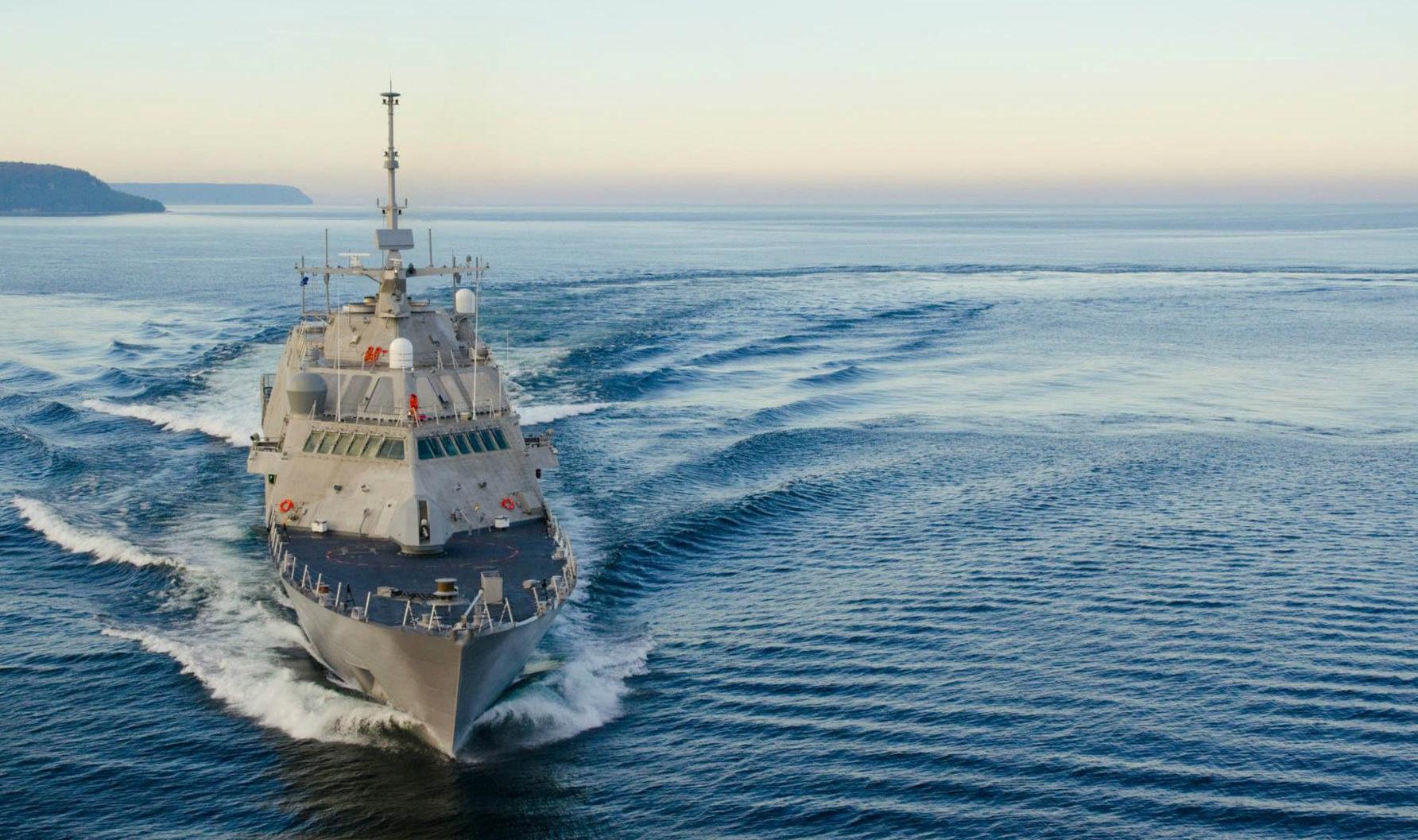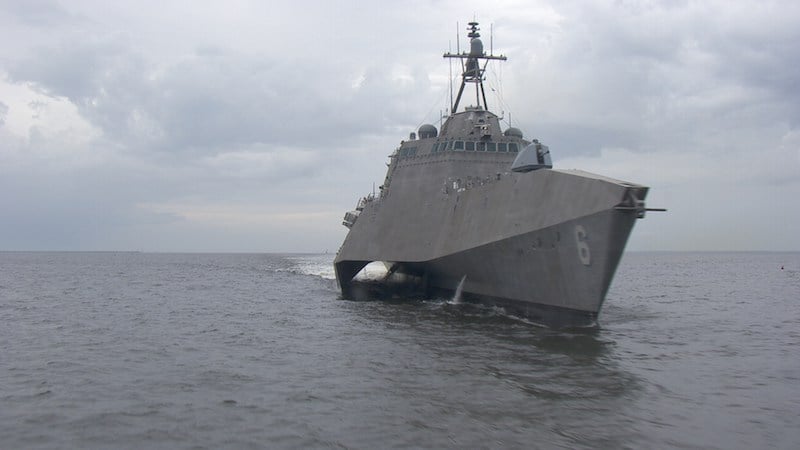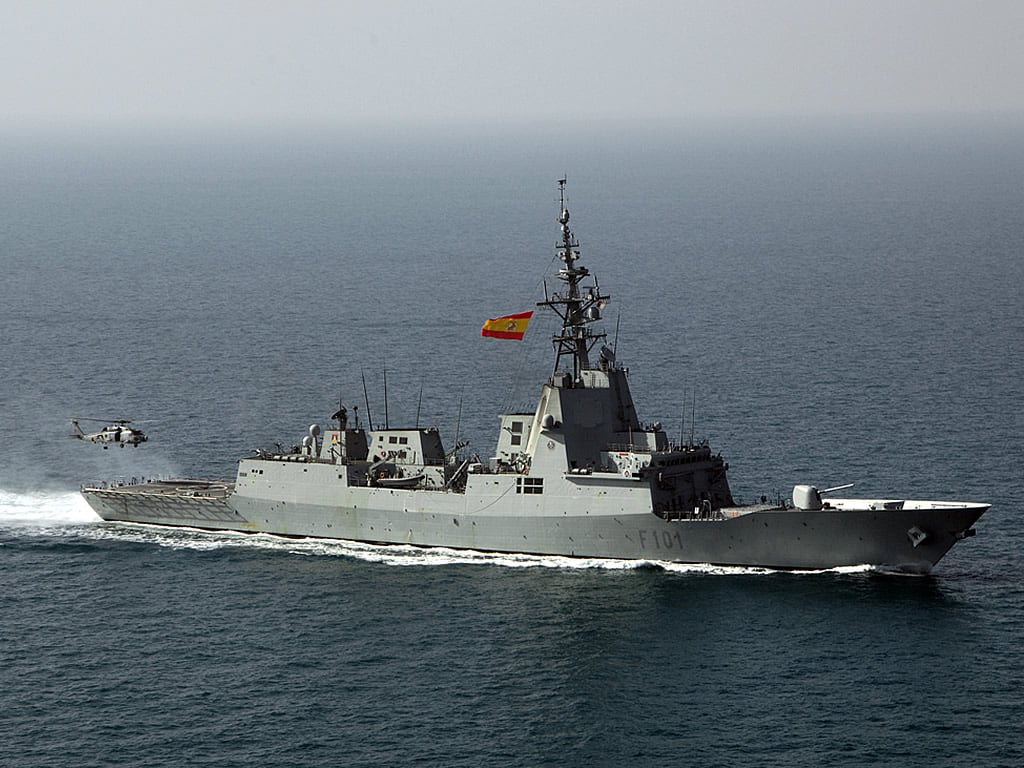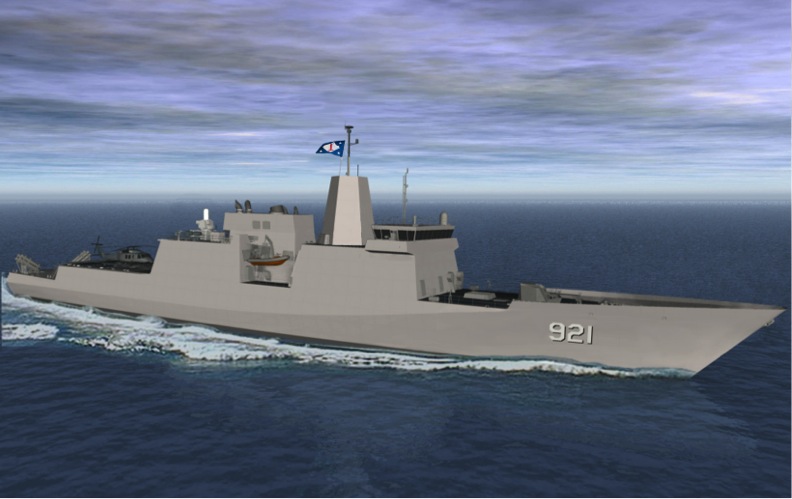
Sen. John McCain (R-Ariz.) plans to hold hearings on the Navy’s frigate program amidst calls to open the competition to more domestic and foreign designs.
McCain – a constant critic of the Littoral Combat Ship, which serves as the basis for the Navy’s frigate plans – told reporters on Tuesday that hearings before the Senate Armed Services seapower subcommittee would seek to reexamine the entire frigate program.
“The frigate acquisition strategy should be revised to increase requirements to include convoy air defense, greater missile capability and longer endurance,” he said at an event outlining the Center for Strategic and Budgetary Assessments’ recent U.S. Navy fleet architecture study, reported Inside the Navy.
“When you look at some of the renewed capabilities, naval capabilities, that both the Russians and the Chinese have, it requires more capable weapon systems.”
A committee staffer confirmed to USNI News on Tuesday the LCS program and the Navy’s plan for a frigate would be major topics of the seapower subcommittee’s hearings in the spring.
Current Plans

At the moment the Navy is set to downselect to an up-gunned version of either the Lockheed Martin Freedom-class or the Austal USA Independence-class and is set to keep a brisk schedule to keep work progressing the yard set to build the frigate.
The LCS program office said earlier this year, and others confirmed recently, that the Navy should release a draft request for proposals for the frigate in March or April, with the full RFP coming out at the end of this year or early next year. That would put the service on track to decide on a single builder – or to change course and award contracts to both, if the new administration decides to support the frigate program and increase its funding as part of the fleet buildup – in late Fiscal Year 2018 or early 2019. When then-Defense Secretary Ash Carter curtailed the frigate program in a December 2015 memo, he mandated that a downselect take place by FY 2019.
However, in a pair of December hearings at the House and Senate armed services committees, Government Accountability Office employees warned lawmakers to slow down the frigate acquisition timeline.
In the Dec. 1 Senate hearing, GAO Managing Director of Acquisition And Sourcing Management Paul Francis told lawmakers that, if they allowed the Navy to move from LCS into a 12-frigate block-buy contract, they would abdicate any oversight opportunities they might want to have.
“[The frigate program] is not going to have milestone decisions. It’s not going to be a separate program. There won’t be a Milestone B. You’re not going to have Nunn-McCurdy protections for the frigate itself. You won’t have a selected acquisition report for the frigate itself. And some of the key performance parameters, as they relate to the mission modules, have been downgraded to key system attributes, which means the Navy and not the [Joint Requirements Oversight Council] will make decisions on what is acceptable,” he warned the lawmakers.
“So let me wrap up by saying, the ball’s not in your court. In a few months you’ll be asked to approve the FY18 budget submit, which will, if current plans hold, include approval for a block buy of 12 frigates. In my mind, you’re going to be rushed again, you’re going to be asked for upfront approval for something where the design isn’t done, we don’t have independent cost estimates, the risks are not well understood.”

After Francis’ comments, McCain retorted “this idea of a block buy before it’s a mature system is absolutely insane.”
A week later, GAO Director of Acquisition and Sourcing Management Michele Mackin told lawmakers that frigate cost was unknown and risk too high, and that the Navy did not need to rush into the program because both LCS builders had a backlog of work – a statement the Navy strongly pushed back against.
“Our work has shown that both LCS shipyards are running quite a bit behind in delivering ships already under contract. Backlogs are many months long and up to a year or more in some cases. So the bottom line here is that both shipyards will be building LCSs for years to come, at least into 2021 at this point. So there’s no schedule imperative to add frigates to the pipeline right now,” she said.
“There’s an opportunity here to not repeat the mistakes of the past. Continued concerns about the capability of LCS, testing that’s years away from being complete, unknowns about the frigate and production backlogs at the shipyards are all factors that need to be taken into account. This potentially $9-billion investment can wait until more is known about what the taxpayers are being asked to fund.”
After that hearing, Sean Stackley – who served as the Navy’s acquisition chief and is now acting secretary – told USNI News that the Navy had a tight timeline to stay on if it wanted either LCS builder, Lockheed Martin or Austal USA, to remain a viable option to build the frigate.
“If the shipyard doesn’t have a backlog, it’s out of business,” Stackley told USNI News right after the hearing, adding that the GAO report’s language about shipyard backlogs shows “a misunderstanding of serial production.”
“Her comment in terms of the timeframe is that when you award the last ships in 2017 … you still have work to take you to the 2020, 2021 timeframe. Well that’s true, because you’re going to order material and then you’re going to build the ship,” he said.
“What that means is, the day you award that last ship, you’re going to start laying people off, and you’re going to lay them off until they’re gone. You’re going to lay them off in the sequence in which you build the ship. So [later on] when you are going to build another ship, if you are going to stop production and [later] build another ship, you’ve lost your skilled labor and you’ve got to rebuild it. Where that has occurred [in previous shipbuilding programs] we have experienced extreme cost delays and quality issues. So that is something that we as a Navy, we as a nation do not choose to do. We do not want to lay off skilled labor and then try to rehire them a couple years later to restart production.”
He then confirmed that the frigate contract needs to be awarded heel-to-toe with the last LCS contract to maintain serial production, “unless you want to put the shipyard out of business.”
Other Options

Calls to create a more lethal multi-mission frigate with a more robust air defense capability have been around since the genesis of the LCS program.
The CSBA study called for starting a new frigate program to spread more air defense assets throughout the fleet.
“We costed out the version we had was going to be about a billion a frigate, so it’s still expensive, but you can buy two frigates for the cost of one [guided-missile destroyer] and distribute your fires,” CSBA study lead author Bryan Clark told USNI News earlier this month.
Existing designs that could meet that criteria are already in service with the Norwegian Navy and the Spanish Armada and are set to enter into service with the Royal Australian Navy soon.

The Spanish and Australians field ships based around the Spanish F-100 design – a 4,555 ton ship that operates the U.S. Aegis combat system, pairing an AN/SPY-1D air search radar with 48 Mk 41 Vertical Launching System cells armed with Standard Missile-2 Block IIIA/B air defense missiles and Evolved Sea Sparrow Missiles (ESSM).
Huntington Ingalls Industries has also pitched a naval version of its Legend-class National Security Cutter for the role of a “Patrol Frigate.” The company has said it could include Mk-41 VLS and an air search radar in its design.
On the larger end, the joint French and Italian 6,500-ton FREMM frigate could also fit into the CSBA construct for a multi-mission frigate, Clark told USNI News.





